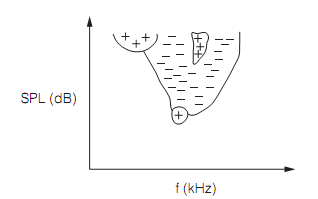Cochlear nuclei
Central auditory pathways procedure three features of sound input in parallel; loudness, tone, and timing. From the last two the brain computes the position of the sound in space. Parallel processing starts in the cochlear nuclei.
Numerous neuron types are there in the cochlear nuclei which can be differentiated by their responses and shape. Several bushy cells reproduce the firing pattern of the primary afferents faithfully, involving phase-locking. Their output, that accurately signals the timing of sound, goes to the superior olivary nucleus that compares the input from both ears to calculate the position of a sound source. By contrast stellate cells have much greater dynamic variety than bushy cells and signal sound level. Therefore, timing and sound level are processed in parallel.
Receptive fields of auditory neurons are known as response maps and are plotted in similar way as the main afferent tuning curve. Five classes of cell can be differentiated in the cochlear nuclei on the basis of their receptive fields (RFs). Type I cells have a purely excitable RF which accurately matches main afferent tuning curves, though all the other types have inhibitory responses that arise by lateral inhibition and that fine tune their frequency response as shown in figure. Type IV cell axons are the main outcome of the dorsal cochlear nucleus.

Figure: Response map of a type IV cell in the dorsal cochlear nucleus. Excitatory region, +; inhibitory region